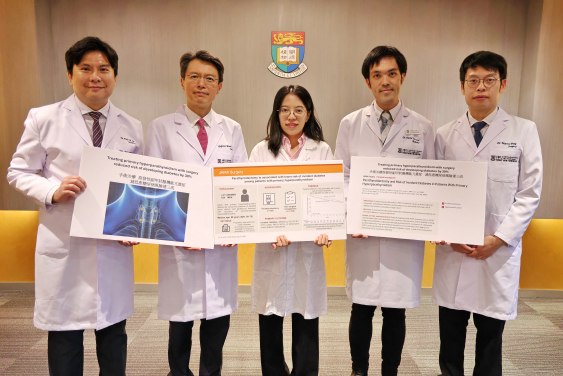
A groundbreaking study led by the School of Clinical Medicine at the LKS Faculty of Medicine, University of Hong Kong (HKUMed), has revealed that parathyroidectomy, the surgical removal of a diseased parathyroid gland, can reduce the risk of developing diabetes by 30% in patients with primary hyperparathyroidism (PHPT). This finding, published in JAMA Surgery, highlights potential metabolic benefits of the surgery beyond its established role in calcium regulation.
PHPT is the third most prevalent endocrine disorder, trailing only diabetes and thyroid diseases, affecting thousands in Hong Kong and millions globally. Despite its prevalence, awareness about PHPT and its association with metabolic conditions remains limited. Characterized by elevated blood calcium levels, PHPT can lead to kidney stones and osteoporosis, but its potential impact on blood sugar regulation is less recognized.
Understanding Primary Hyperparathyroidism
Dr. David Lui Tak-wai, Clinical Assistant Professor at HKUMed, explains that the parathyroid glands, distinct from the thyroid, are crucial to the body’s endocrine system, primarily regulating blood calcium levels. ‘When calcium levels are low, the parathyroid glands secrete parathyroid hormone, which prompts the body to release calcium from the bones and enhances calcium absorption,’ Dr. Lui noted. He emphasized that while PHPT’s complications in kidneys and bones are well-documented, its metabolic consequences, particularly its link to diabetes risk, are underappreciated.
Surgical Intervention and Diabetes Risk Reduction
The study analyzed electronic health records from over 3,100 adult PHPT patients in Hong Kong, tracked from 2006 to 2023. Over a median follow-up of nearly three years, researchers monitored the onset of diabetes using medical diagnoses, blood tests, and medication records. The results showed that patients who underwent parathyroidectomy had a 30% lower risk of developing diabetes compared to those who did not.
‘Parathyroidectomy was consistently associated with a lower risk of new-onset diabetes, and our findings remained robust with repeated validation and rigorous adjustments,’
stated Dr. Liu Xiaodong from the Division of Endocrine Surgery at HKUMed. The study found that the benefits were particularly significant in younger patients and those with severe PHPT.
Implications for Public Health and Clinical Practice
Dr. Matrix Fung Man-him, another key researcher, emphasized the broader metabolic benefits of parathyroidectomy. ‘Excess parathyroid hormone can lead to increased calcium levels within cells, which may reduce insulin sensitivity and raise blood sugar levels. Surgery helps correct this hormonal imbalance, hence may improve blood glucose control,’ he explained. Dr. Fung hopes the study will raise public awareness of PHPT and encourage early diagnosis and treatment, especially among those at high risk for diabetes.
The research team, comprising Dr. Lui and Dr. Fung, calls for increased public education about PHPT to ensure more patients can benefit from surgical intervention. Early diagnosis and treatment could significantly enhance health outcomes, reducing the burden of diabetes and associated complications.
Looking Ahead
This study’s findings could transform clinical approaches to treating PHPT, emphasizing the importance of considering metabolic outcomes in surgical decision-making. As awareness grows, healthcare providers may increasingly recommend parathyroidectomy not only for its traditional benefits but also for its potential to mitigate diabetes risk.
The announcement comes at a time when global diabetes rates continue to rise, underscoring the need for innovative strategies to address this public health challenge. By highlighting the link between PHPT and diabetes, this research opens new avenues for prevention and management, potentially benefiting millions worldwide.
As the medical community digests these findings, further research may explore the mechanisms behind the metabolic benefits of parathyroidectomy, paving the way for new treatments and improved patient care.






